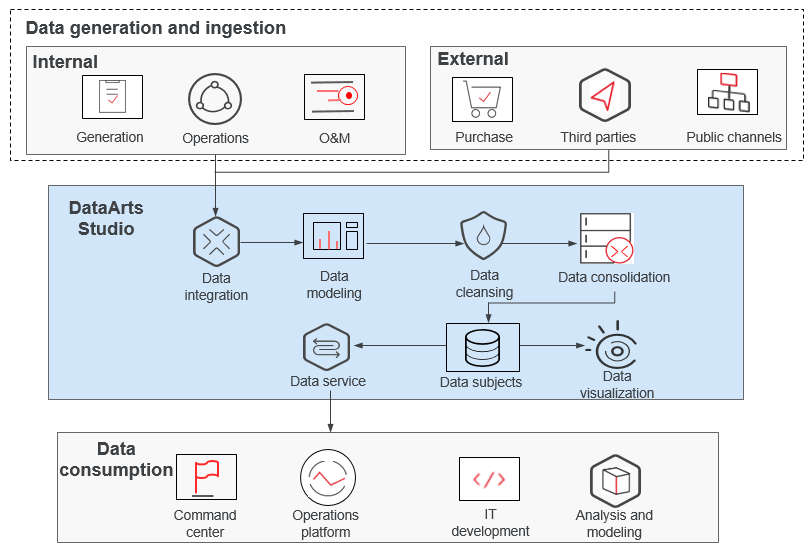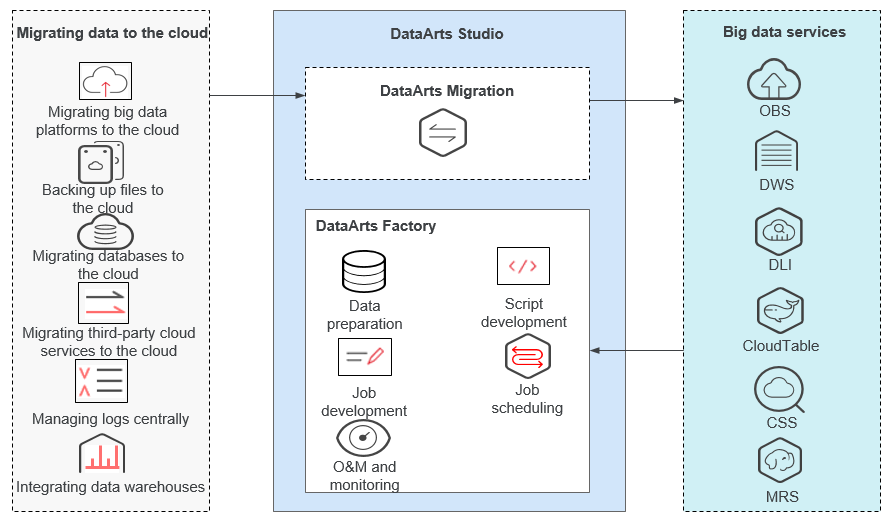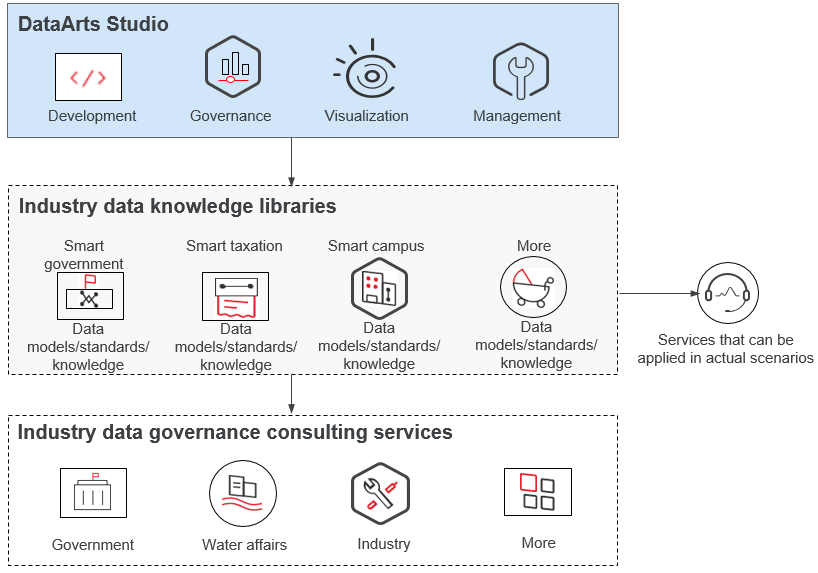Application Scenarios
One-Stop Data Operations and Governance Platform
You can use the one-stop data lake operations and governance platform for data collection, architecture design, monitoring, cleansing, modeling, connection, integration, consumption, and intelligent analysis. It helps you rapidly grow your enterprise's big data operations.
Advantages
- Job orchestration for multiple cloud services
- Comprehensive data control and governance
- Diverse data engines
Support for interconnection with all HUAWEI CLOUD data lake and database services, and with traditional data warehouses, such as Oracle
- Ease of use

Building Cloud-based Data Platforms with Speed
You can use DataArts Studio to migrate offline data to the cloud and integrate the data into big data services. On the DataArts Studio management console, you can use the integrated data to quickly start developing jobs and easily build enterprise data systems.
Advantages
- Quick data integration
On the GUI, you can migrate offline or real-time data to cloud warehouses in just a few steps.
- Multiple warehouse services
You can choose GaussDB (DWS), MRS, or any other warehouses to meet your service needs.
- Secure, stable, and cost-saving
Data on the cloud is secure owing to one-stop data service capabilities and stable data warehouse services; you no longer need to build and maintain big data clusters, significantly reducing costs.

Building Data Lake Governance Platforms Powered by Industry Know-How
Incorporating Huawei's technological expertise in industry models and algorithms, DataArts Studio can help you build a data governance platform to quickly grow your enterprise's data operations capabilities.
Advantages
- Industry-tailored solutions
Custom solutions for government, taxation, smart city, smart transportation, and smart campus
- Standards compliance
- Various domain models
A variety of industry domain models developed from eight types of data, which are people, organization, event, spatio-temporal, vehicle, asset, device, and resource data, and their relationships
- Quick utilization of industry libraries
Quick utilization of industry-specific subject libraries, algorithm libraries, and metric libraries

Feedback
Was this page helpful?
Provide feedbackThank you very much for your feedback. We will continue working to improve the documentation.






